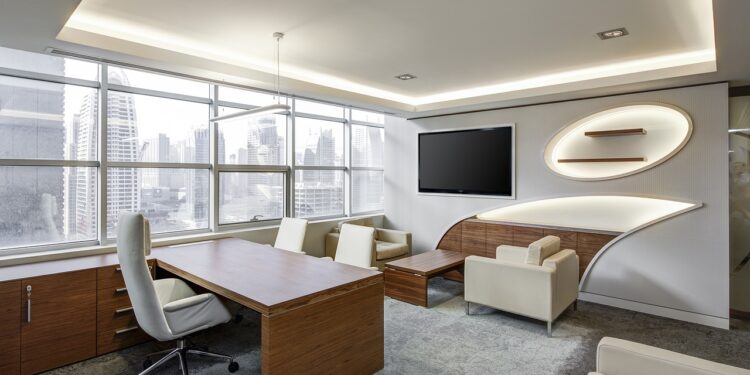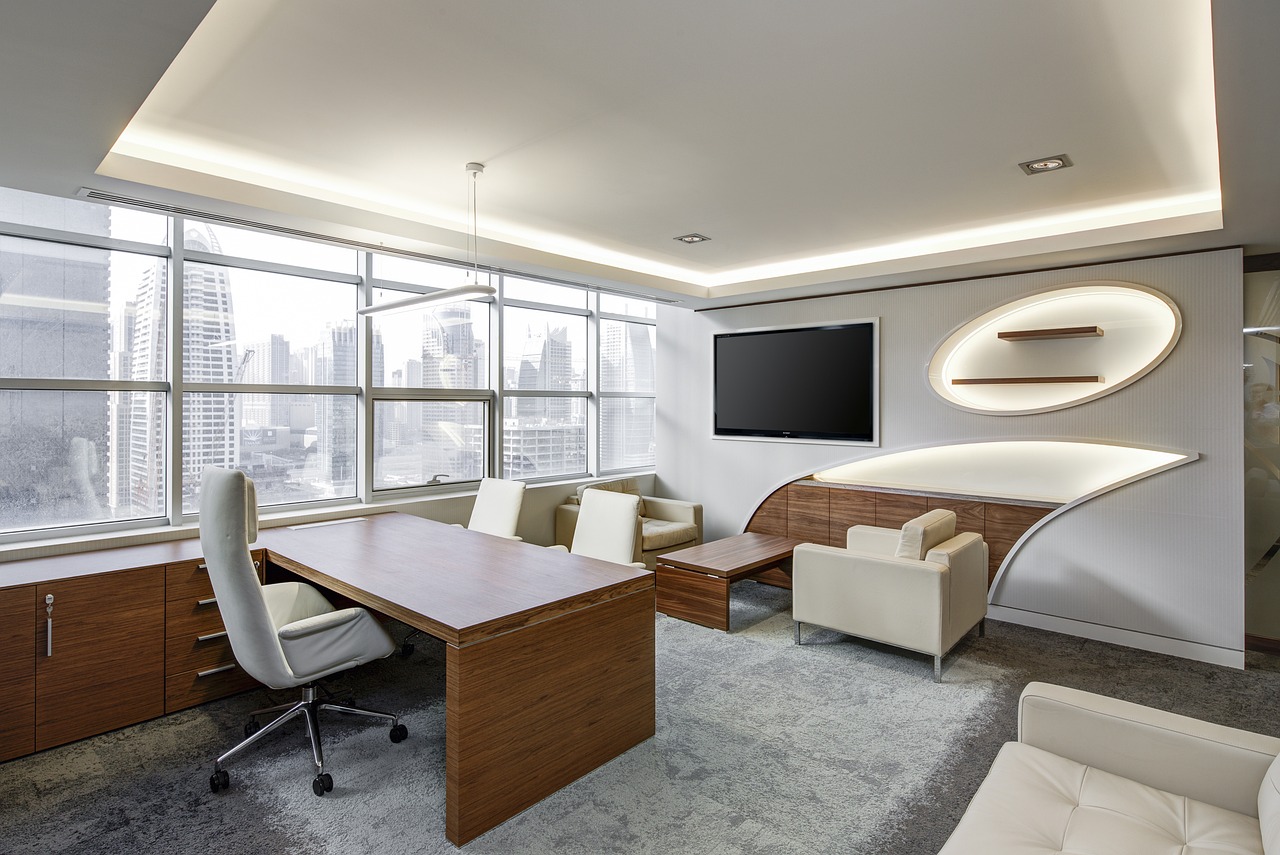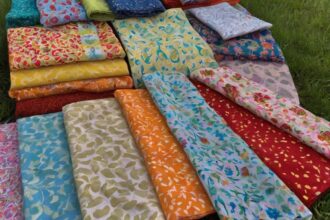The Floor Trick Everyone in Office Spaces Is Using


Walk into a modern office, and chances are the floor under your feet isn’t a big sheet of carpet. It’s not cold, echoey tile either. It’s something in between—something smarter. These floors are actually made of square pieces called carpet tiles, and there’s a good reason they’re popping up in more and more commercial spaces.
They might not seem like a big deal at first, but they’re actually changing how offices and other busy places are designed, cleaned, and even updated. Here’s what makes them so useful—and why so many people are quietly switching to them.
Table of Contents
- 1 What Are Carpet Tiles and Why Are They So Popular?
- 2 Cleaning and Maintenance Are Way Easier
- 3 They Make Offices Quieter (and Nicer to Work In)
- 4 You Can Get Creative with the Design
- 5 They’re Built to Handle the Long Haul
- 6 They Work for More Than Just Offices
- 7 Why So Many Are Making the Switch
- 8 In Case You Missed It
What Are Carpet Tiles and Why Are They So Popular?
Carpet tiles are exactly what they sound like: squares of carpet, usually around 50cm by 50cm, that fit together like puzzle pieces to make a full carpeted floor. Unlike traditional carpet rolls, these tiles are laid down one at a time. That makes them super flexible, especially in places where the floor needs to work hard—like offices, schools, hotels, and conference rooms.
One reason people like them so much is because they’re easy to install and even easier to replace. Spill coffee in one spot?Just pop out that tile and replace it. Need to run new wires under the floor? Lift a few tiles, make the change, and put them back down. This kind of convenience is why so many business owners are choosing carpet tiles when planning a new space or renovating an old one.
Cleaning and Maintenance Are Way Easier
Office floors deal with a lot. Think about how many people walk across them every day, sometimes dragging chairs, bags, or gear behind them. Add in food, drinks, and whatever the weather brings in, and it’s clear these floors need to be tough.
With regular carpet, one bad stain can mean replacing a whole room’s worth of flooring. But with carpet tiles, just one tile can be swapped out. No need to rip up everything or bring in big machines. Some businesses even keep spare tiles in storage, ready to go when something happens.
Plus, many carpet tiles are made to resist stains and water. Some have special backings that keep liquid from soaking through to the floor underneath. That helps stop smells and mold, which is a big deal in places with lots of people.
They Make Offices Quieter (and Nicer to Work In)
Noise matters. When people are trying to focus, constant footsteps, rolling chairs, or echoing voices can be super distracting. Hard floors like vinyl or wood can make those sounds worse, bouncing noise around the room.
Carpet tiles help with that. The soft surface soaks up sound, making rooms feel calmer and quieter. That’s one reason why open offices and coworking spaces often use them. Less noise means people can think clearly and stay on task.
Carpet tiles also add comfort. They feel softer underfoot, which can be a relief for people who stand or walk around a lot during the day. Some styles even have a little cushion built in, which helps reduce tiredness after long hours.
You Can Get Creative with the Design
One of the coolest things about carpet tiles is how easy they are to mix and match. Since they come in squares, it’s simple to create patterns, borders, or color blocks without needing any special cuts or tools.
Want to mark off a walkway, team area, or meeting zone? Just use a different color of tile. Some offices use this trick to help with wayfinding or to give each department its own vibe. It’s also helpful in big buildings where rooms can start to look the same.
Changing the design later is just as easy. Tiles can be lifted and moved around, which means companies can update their space without replacing the whole floor.
They’re Built to Handle the Long Haul
Durability matters a lot in commercial spaces. Floors take a beating from heavy use, rolling chairs, and office furniture. Carpet tiles are made with all this in mind. The materials are tough, and the backing helps keep the tiles in place even in busy areas.
Because they’re modular, the tiles also wear more evenly. If one area starts to look a bit worn out—maybe near the entrance or the break room—it can be replaced without affecting the rest of the floor. That helps buildings look newer for longer without constant repairs.
Many high-quality carpet tiles are also eco-friendly. Some are made from recycled materials or can be recycled later, which helps reduce waste. Businesses trying to be more sustainable often see this as a big plus.
They Work for More Than Just Offices
Even though offices use carpet tiles a lot, they’re not the only places doing it. Schools, airports, shops, libraries, and even gyms are using them too. Anywhere with lots of foot traffic can benefit from the flexibility and strength they offer.
In schools, for example, carpet tiles help with noise and are easy to clean when there’s a spill. In gyms, special versions are made to handle moisture and heavy gear. Some tiles are even made for outdoor spaces.
Because the designs vary so much, it’s easy to find a style that fits the feel of any space. From bold colors to quiet neutrals, there’s something for every kind of building.
Why So Many Are Making the Switch
The biggest reason people are switching to carpet tiles isn’t just one thing—it’s all the small benefits added together. They save time. They save money. They make spaces look cleaner, sound quieter, and feel more comfortable. And when something goes wrong, it’s easy to fix without starting from scratch.
Even building managers and cleaners like them. Less hassle, fewer tools needed, and way less downtime when something needs changing. That’s a win for everyone involved.
In Case You Missed It
Carpet tiles might not seem exciting, but they’re actually asmart upgrade for commercial spaces. They’re easy to install, quick to fix, and flexible in design. They help cut down noise, handle wear and tear, and let buildings look modern without being high-maintenance.
That’s why so many offices and public spaces are using them now. It’s not just about how the floor looks—it’s about how it works. And with carpet tiles, it works a lot better.
Have you seen these in a space before? Once you know what they are, they’re hard to miss. Keep an eye out next time you walk through an office, and chances are, you’ll be stepping on this clever little trick too.






